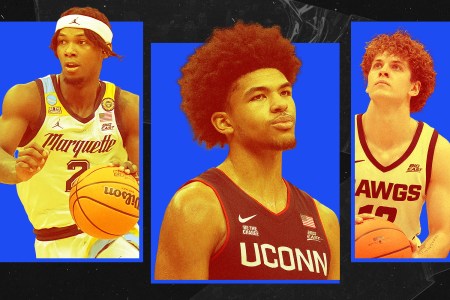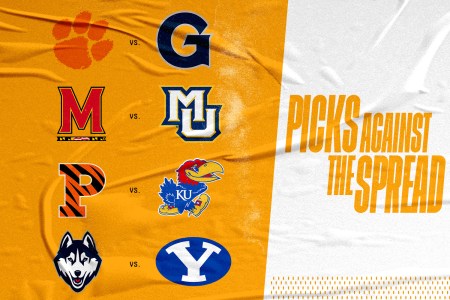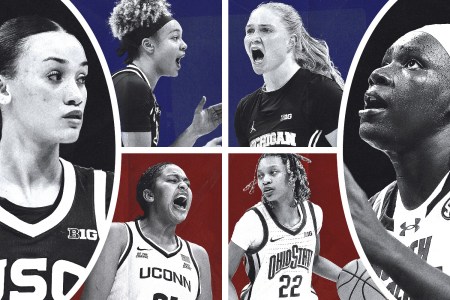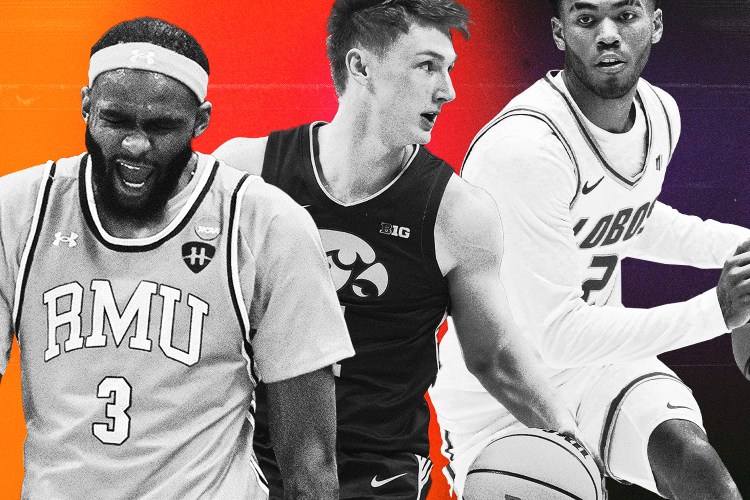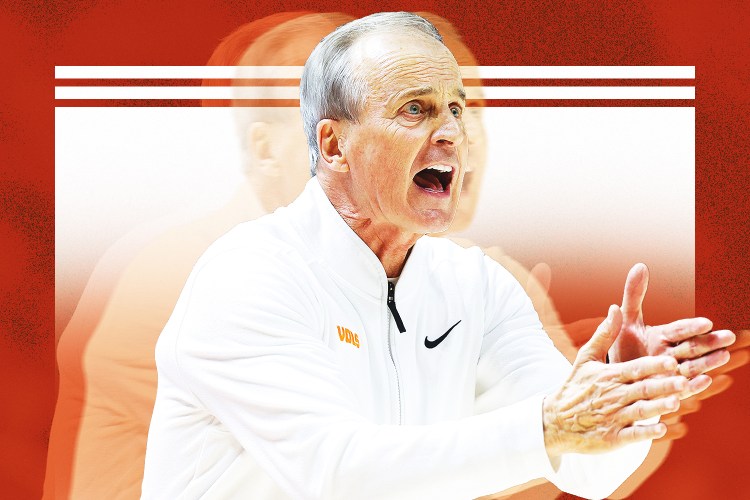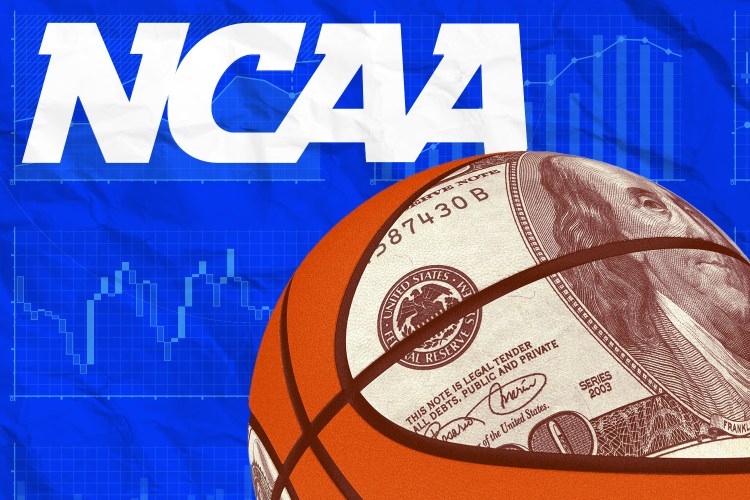There are some big freshmen and returning names headlining the 2026 NBA draft cycle. Darryn Peterson, Cam Boozer and AJ Dybantsa are arriving on the scene with a ton of hype, while NIL has helped keep star college players like JT Toppin, Yaxel Lendeborg, Tahaad Pettiford and Bennett Stirtz on campus for another season.
But every year we see unsuspecting players begin the season off the draft radar before playing their way onto first-round or second-round boards. Hoops HQ has pinpointed players who could start to draw NBA interest and improve their stock, based on new opportunities after transferring, expected development after last year’s flashes or, simply, underrated skill sets.
Amarion Dickerson, 6-foot-7 senior forward, USC
Dickerson put together some of the most exciting defensive tape in the country at Robert Morris. He’ll likely be taken more seriously if he repeats the same 8.7-percent block rate and off-ball playmaking at USC, and he should, given his frame and athleticism. Dickerson regularly showed incredible reactions for out-of-nowhere, weakside, chase-down or jump-shot rejections.
Still, it was the 25 points he scored against Alabama in the NCAA Tournament that suggested he should be on breakout watch this season. Athletic finishing remains his bread-and-butter; Dickerson shot 71 percent at the rim and racked up 53 dunks in 35 games, as his fluidity and explosive traits translate to easy buckets.
He’ll still need to show more offensively to generate serious NBA love. His 21 threes highlight shotmaking ability, but if Dickerson can raise his volume and accuracy with USC, scouts could start to look at him as a defensive or energy specialist with just enough to offer at the other end with his high-flying and spot-up three-ball.
Josh Dix, 6-foot-6 senior wing, Creighton
Though Dix’s game never screamed “upside” at Iowa, his skill set and intangibles could sway scouts to picture a fit for a special role at the next level.
Creighton coach Greg McDermott figures to get the most out of Dix’s shotmaking versatility and firepower, and few notable prospects put together a more impressive shooting profile last year: Dix shot 42.2 percent on 154 three-point attempts, 44.6 percent on dribble jumpers, 45.5 percent on spot-up jumpers and a combined 9-of-20 on threes off screens and handoffs.
Dix also shot an outstanding 50-of-98 in the midrange while finishing 68.5 percent of his attempts around the basket. He’s not an explosive athlete, but he picks the right spots to attack and effectively uses his body, patience and left hand to convert drives, transition opportunities and cuts.
Even if the self-creation flashes don’t translate to the NBA, or he doesn’t receive many on-ball or ball-screen reps, his size, advanced three-level shooting and excellent IQ (89 assists, 27 turnovers) make for an intriguing combination for a projected role player.

Paul McNeil, 6-foot-5 sophomore guard, NC State
It took until February for McNeil to log double-digit minutes in consecutive games last season, but his one-on-one footwork and shotmaking turned heads while he scored a combined 38 points against North Carolina and Wake Forest.
Though his entire freshman body of work was limited, McNeil demonstrated fluid self-creation and shooting off the dribble from the midrange to the arc. He can separate easily by stepping back or elevating, and he has clear skill and confidence with tools that mirror plenty of NBA two-guards.
Even with the Wolf Pack adding Darrion Williams, Tre Hollomon and Matt Able, McNeil should be looking at a usage spike in 2025-26. Given the likelihood that the team will win more games and earn a spotlight, McNeil’s consistent three-level scoring figures to warrant attention from NBA scouts.
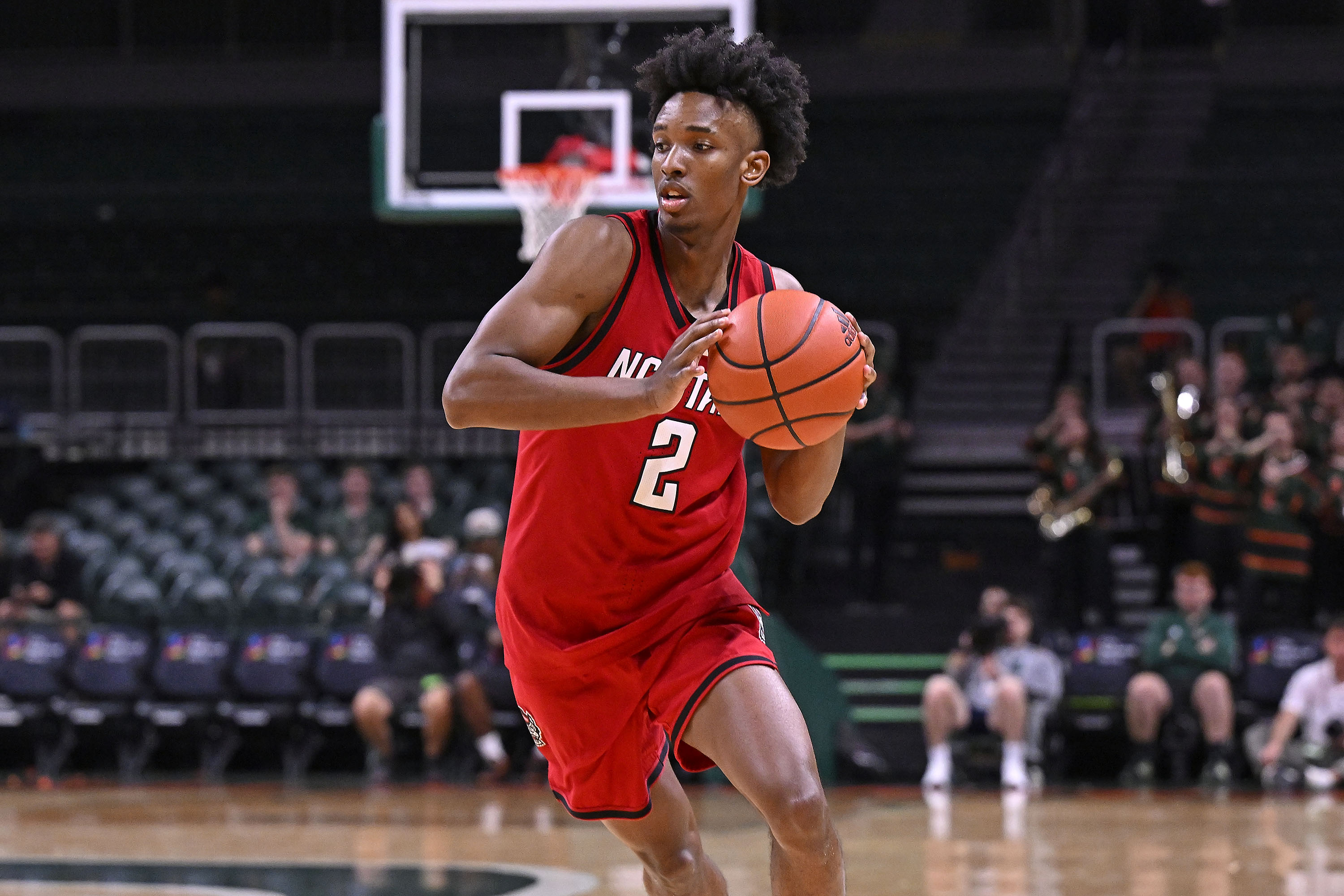
LeJuan Watts, 6-foot-6 junior forward, Texas Tech
Watts goes from Washington State to Texas Tech, where he’s expected to replace Darrion Williams and take on a role as a secondary playmaker.
Watts is unique with a 6-foot-6, 225-pound frame and the ability to distribute (4.4 assists in 2024-25). While he does get casual and turn the ball over too much, he demonstrates passing IQ and quick processing. He also shot at least 40.0 percent from three in consecutive seasons, although scouts will want to see more volume. Right now, Watts is most productive and efficient in the post using his strength and touch, though JT Toppin figures to be the Raiders’ first option in the key.
Regardless, Watts figures to draw scouts’ attention with a mix of forward or big-wing size, pick-and-roll ball-handling ability, post-up skill and three-point range.
Donovan Dent, 6-foot-2 senior guard, UCLA
Dent is one of college basketball’s most productive and well-regarded players, but this may finally be the year his tape, numbers and impact sway scouts to see a future pro.
He’ll run the show at UCLA after three seasons in New Mexico, where he improved his shooting, playmaking and finishing every year. With a heavy workload of ball screens and transition reps, he ranked top-three in the NCAA in points produced last season. He puts constant pressure on defenses with his speed in the open floor, as well as his hesitation-and-burst moves in the half court. Dent has developed excellent command as a pick-and-roll ball-handler by creating advantages, manipulating defenses, picking his spots to attack and setting up teammates.
Dent compensates for limited size and explosion with an outstanding float game (47.5 percent). His pull-up wasn’t reliable, but he did make 45 dribble jumpers, showing enough shotmaking ability and growth for scouts to believe. And he was highly efficient as a catch-and-shoot weapon (48.7 percent) when spotting up.
A 6-foot-2 ball-dominant senior guard is sure to have plenty of skeptics. But if we lower the bar in the second round and start to think about value and backcourt depth, Dent could make an interesting case as a change-of-pace playmaker who excels at generating scoring opportunities.
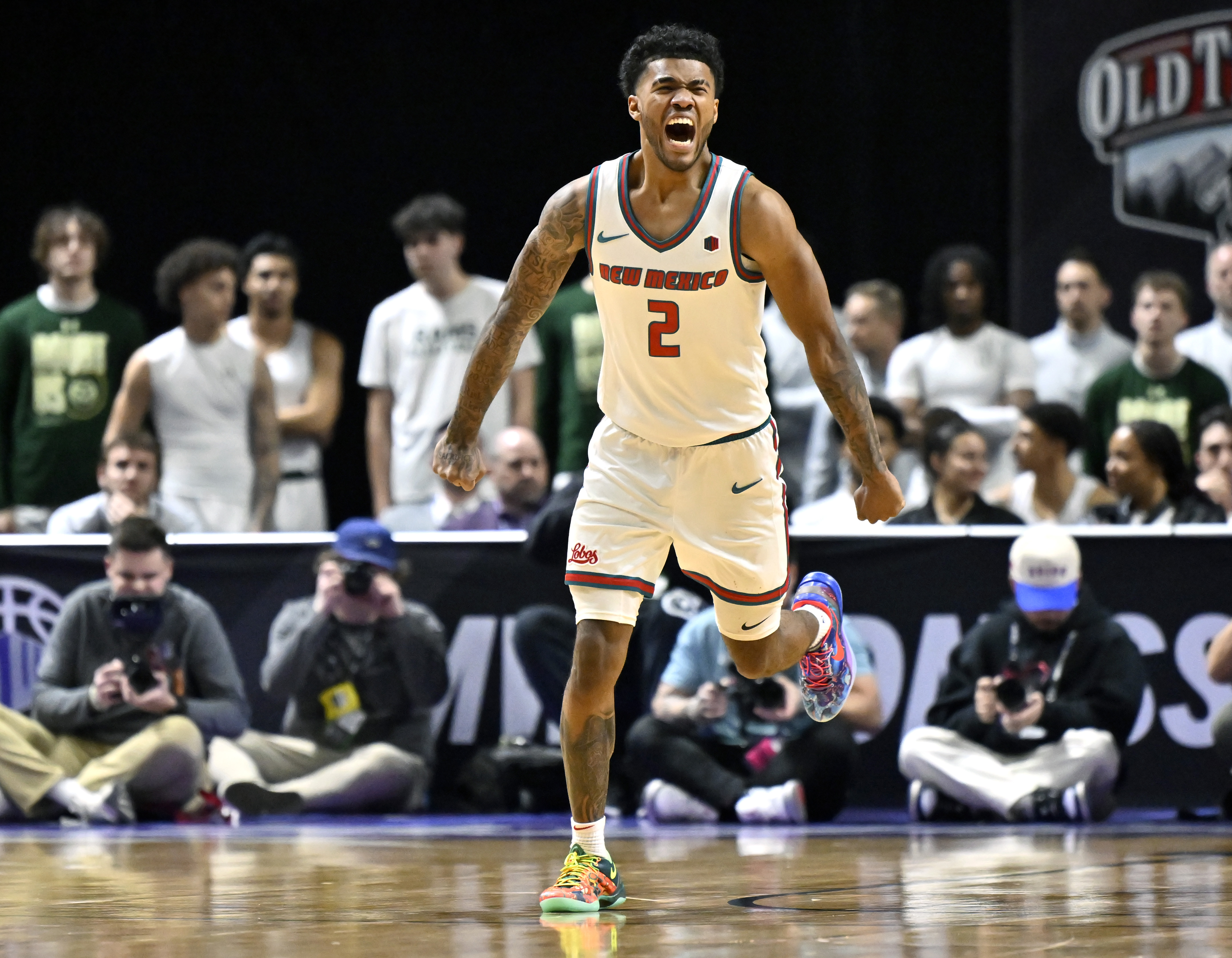
Anthony Robinson II, 6-foot-3 junior guard, Missouri
Robinson wasn’t a scoring machine for Missouri, but he potentially checks an intriguing mix of boxes with his defense, playmaking and shooting potential.
He registered a 5.2 steal percentage in 2024-25, with the tape showing outrageous hand speed and anticipation. Offensively, Robinson demonstrated promising point-guard feel and vision as he generated 1.1 points per possession (96th percentile, per Synergy Sports) as a pick-and-roll ball-handler, creating and scoring with change of speed, timely bursts, a 47.5 percent pull-up jumper and reliable floater.
Maintaining his shooting accuracy on added volume this year should result in more interest from scouts. Robinson could have teams picturing an archetype that evokes two-way guards such as Marcus Smart, TJ McConnell and Jose Alvarado.
Top 10 Big East Breakout Candidates for the 2025-26 Season
All 11 Big East programs will be counting on new faces to produce in 2025-26, as last year’s top 12 scorers from the conference are now gone. Who’s next up?
Kam Williams, 6-foot-8 sophomore forward, Kentucky
Williams turned one year of 41.2 percent three-point shooting and scoring efficiency at Tulane into a key role at Kentucky. Repeating last year’s success against more credible opponents should draw NBA interest, considering the fit of a 6-foot-8 forward who’s lethal from deep, a threat to pull up and a finishing weapon at the rim.
He played exclusively off the ball at Tulane, but Kentucky may lean more on Williams, particularly with Jayden Quaintance still not cleared for contact. There is some guesswork when it comes to his ball-handling, creation and off-the-dribble scoring, but even without showing any new developments to his game, Williams has the physical tools and skill set that have earned prospects like Trey Murphy, Cam Johnson, Aaron Nesmith, Saddiq Bey and Jett Howard top-20 looks in the draft.
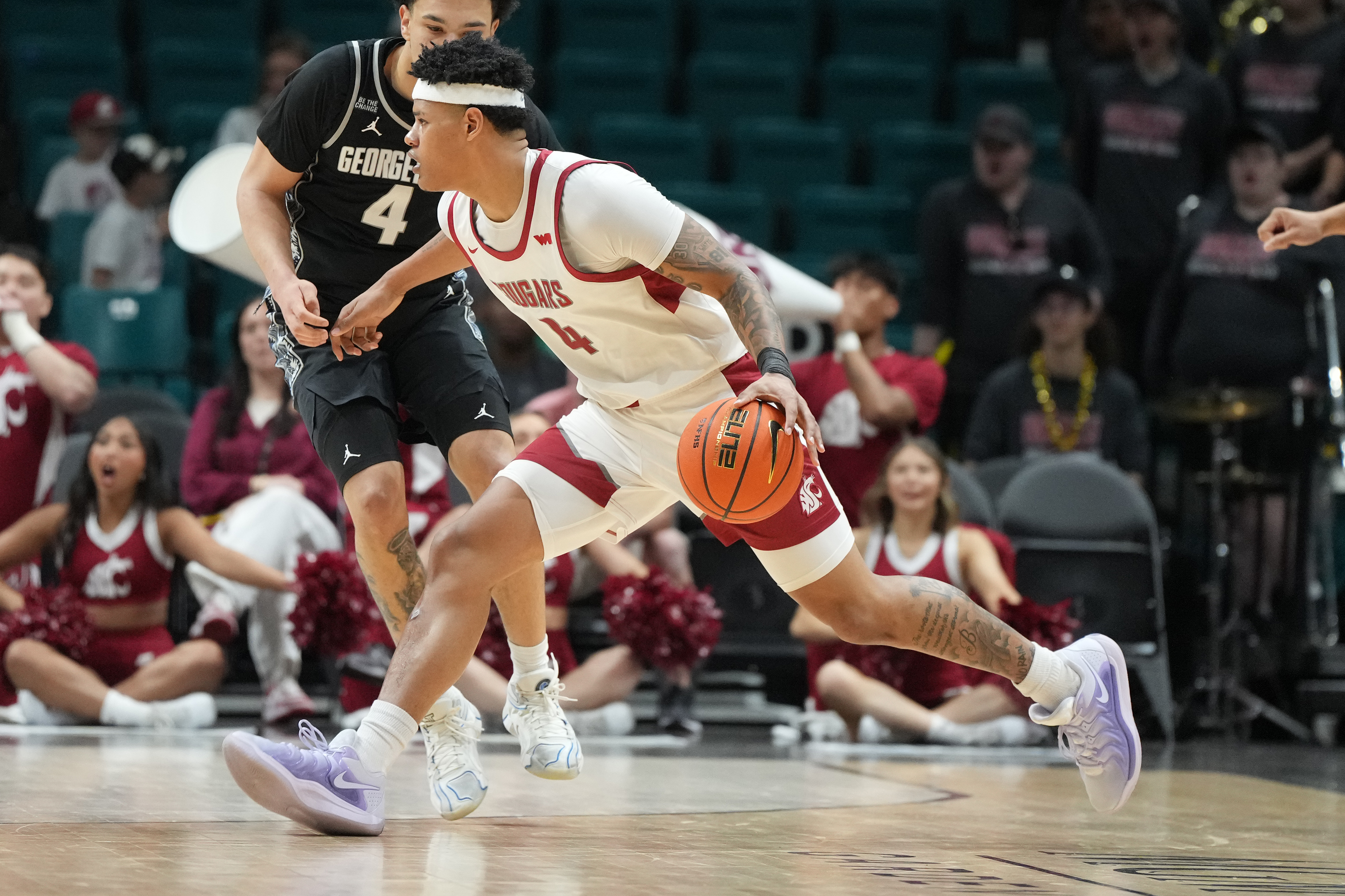
Kingston Flemings, 6-foot-4 freshman guard, Houston
Houston is listing Flemings at 6-foot-4 and 190 pounds, a potential sign he’s grown and added important weight as he heads into his freshman campaign.
Though the Cougars’ depth does raise questions about his role this year, Flemings may not need extended minutes to catch scouts’ attention. Flemings is ultra quick and creative, mixing his advantage-creating handles and shiftiness with impressive finishing and passing IQ.
That skill set could allow Milos Uzan to focus more on scoring, with Flemings serving as a comfortable and willing setup man from the point. Flemings could ultimately look dangerous, smart and efficient enough with the ball to intrigue scouts while he continues to hone his outside shot.


